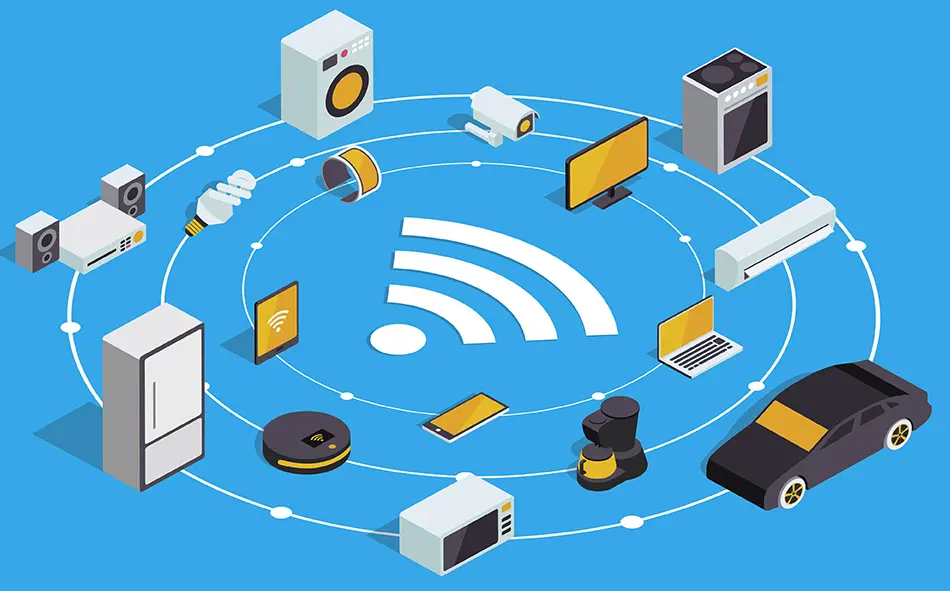
Is your business IoT ready?
Added Friday 22 November 2019 by Arrow
IoT is a term that's been around since the late '90s, but it's only in the last decade that the growth of connected devices has really started to take hold. Earlier this year, Gartner Inc. forecasted that the enterprise and automotive Internet of Things (IoT) market* will grow to 5.8 billion endpoints in 2020, a 21% increase from 2019. So, as we move into a new decade, we spoke to Arrow to find out what businesses need to consider if they're thinking of implementing an IoT strategy in 2020.
IoT, Mobility and AI should be implemented in concert, as one integrated system, working together to further an organisation’s business objectives. With accelerating experience Industry benefits from open standards, interoperability, and a collaborative approach to the development and deployment of these technologies. Arrow works with a leading technology ecosystem that is committed to working across disciplines on behalf of our System Integrators and end clients.
- Consider the Challenge - Take a step back and look at things clearly. Determine the topics, assets and processes that are causing you or your customers issues and problems that you believe IoT will fix. It’s important to gain an understanding of success criteria which can contribute to better defining what ROI looks like. Both an end client and a technology partner may also be able to align this knowledge to the existing technology, skills and experience within the business. A commonly used approach for this is to spend a ‘day in the life of’ individuals, teams or business units to better define the challenges. It’s often the case that unlinked teams across an organisation share similar issues that mean they can adopt similar solutions providing a multiple use case which in turn yields improved ROI.
- Consider the technology - As the process of discovery enters its next phase, considerations relating to the underlying technology used need to begin. Using the basic IoT architecture of sensor/device to gateway/connectivity to service/app can provide the framework needed to begin to better define the solution requirements that best meet the identified challenges and issues for an organisation.
- Consider the Data - There will already be data of value that exists in ICT systems of records in your organisation. At this stage its key to consider who is responsible for that data, how can you access it, where you will collate it and what rules and data protection you must comply with. There will also be many other sources around the organisation that are capable of generating data such as buildings, plant and machinery, fleets and people. Is it practical to gather it and what are the practicalities of doing so? How will those devices at ‘the edge’ be powered and what data protocols will they use? Will data be accessible via APIs? How will you overcome all of these challenges?
- Consider the Communication - Do you take a multi-protocol approach to communication or look to standardise where you can? Will your environment mean that you can use edge technology that deploys on a common communication network or do you need redundancy or failover, or a secondary network for ‘challenging’ environments such as where there is a lack of direct power, electrically ‘noisy’ environments or inhospitable built-environments – such as subterranean. At what rate will data be generated and transported across the networks used? The volume vs velocity vs costs conundrum must be considered as part of the strategy.
- Consider the Insights needed - Throughout the process of defining solution and/or technologies, you should remain mindful of who is expected to be the user of the technology deployed. Regardless of expert user, role specific function or general organisation audience, ease of use and communication of vital information will impact the successful adoption of a solution. Will you want to rely on data dashboarding and solution application interfaces? For example, if adopting multiple tactical IoT solutions, does having multiple user interfaces make sense? The answer may be yes if these are user-centric for specific roles or functions to aid adoption, but the answer may be no if data needed is for a team lead executive summary – too much content vs too little. Will you want to aggregate data from multiple solutions to a central, single source for subsequent use? For example, do you want to link smart parking data to room occupancy or footfall data to identify trends and correlations in facility usage and if so, will you look to take reports from each solution and investigate separately or create a combined data set to explore via a third-party platform?
It's also important to flag up that security and the operational costs of such solutions versus the impact of deployment get forgotten, so add these to the list! What is common is that there is a consistent effort to define key stakeholders and drive communication and collaboration throughout the internal users and business owners within the organisation alongside the direct and any ‘ecosystem’ partners developing and deploying the technologies around IoT.
It’s easy to rush into adopting point technology that appears easy to deploy, low cost and low risk. Ultimately, solving individual business problems or challenges in isolation may work and even be justified in the short term, but the nature of IoT means that there is still a wide range of technologies, standards and protocols out there. Taking a structured approach to the fundamentals of IoT adoption is preferable when compared to short-term fixes in order to avoid the risk of creating longer-term problems that occur thanks to siloed apps, data and incompatible technologies.
More Information
If you’d like hear more about this, please complete the form below:
